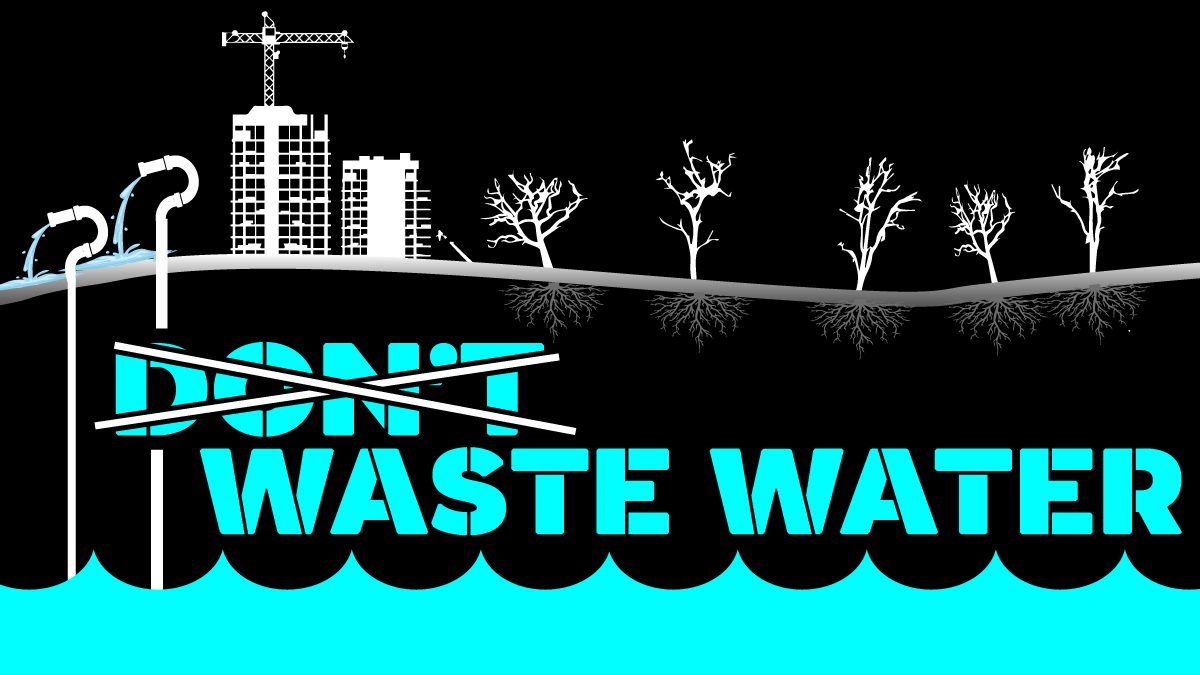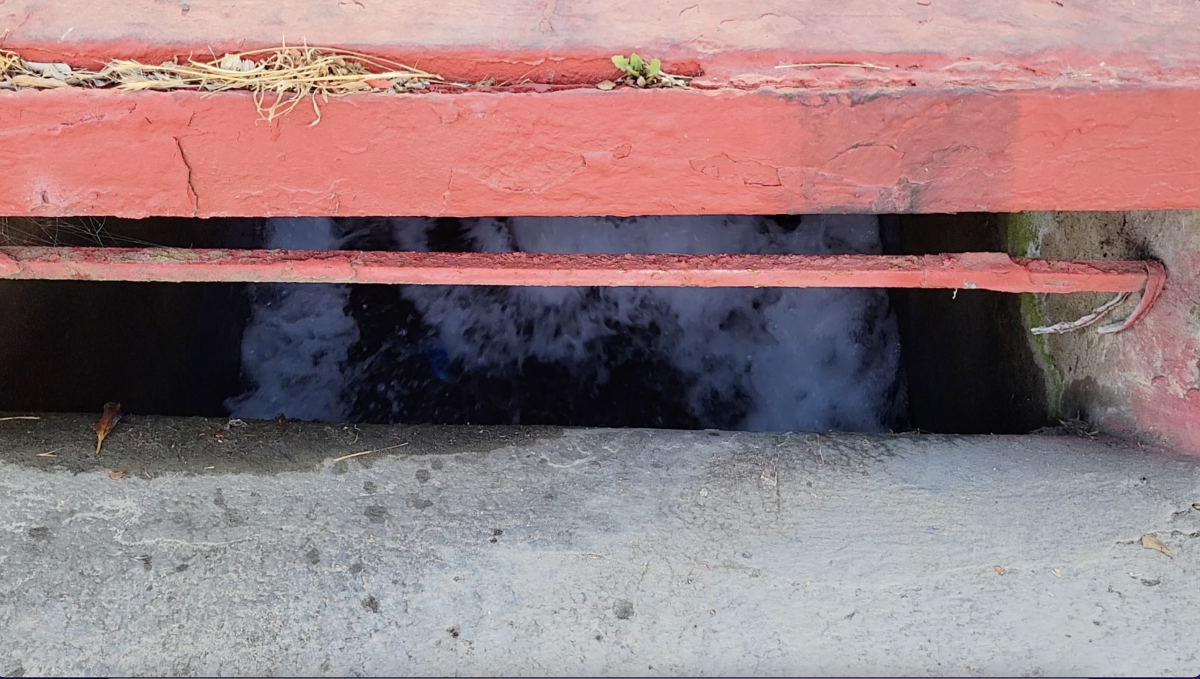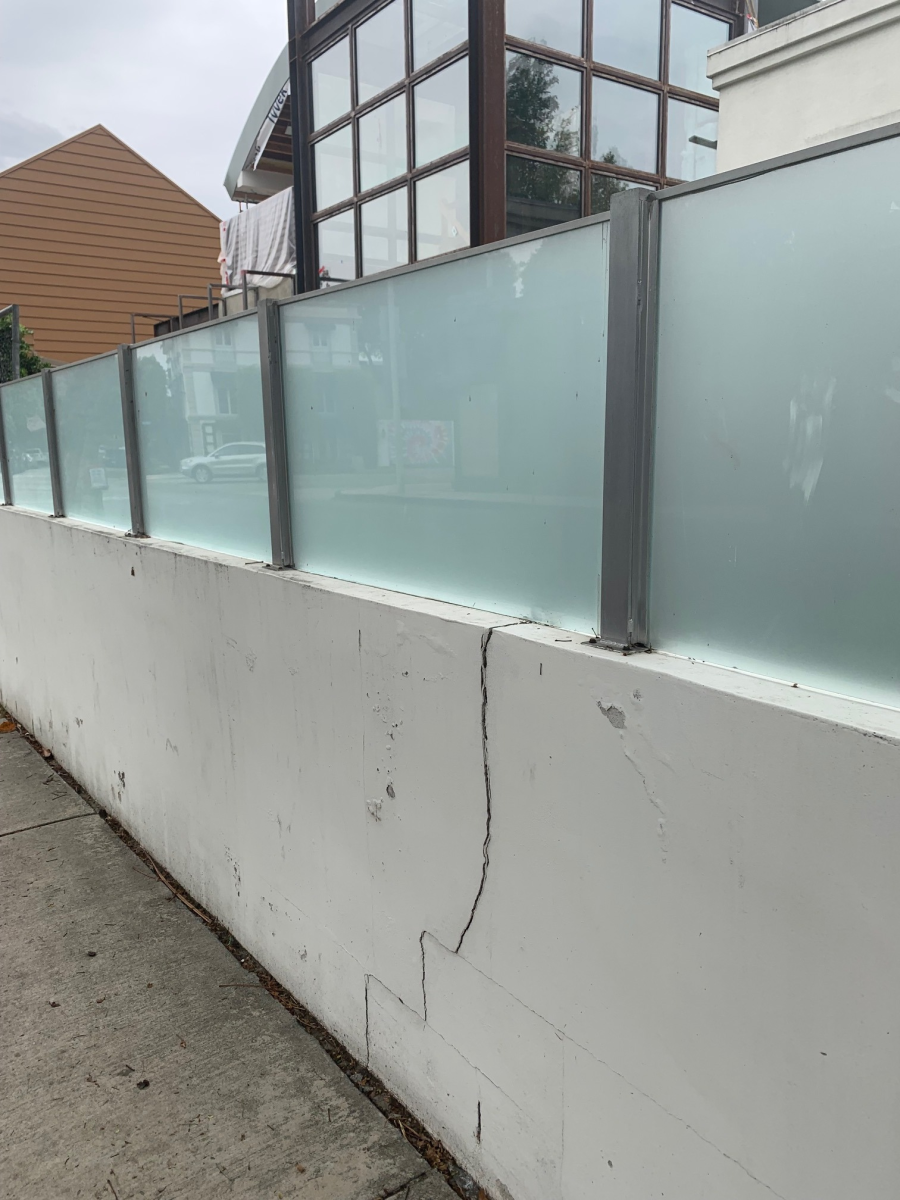
Precious natural groundwater is pumped away every day to build subterranean parking garages — and City Hall is perfectly OK with that.
Here we are in the midst of a drought once again or as I prefer to refer to it – climate change, when we as residents and businesses are asked to conserve water and reduce water consumption.
If you presently live in an area where your water agency receives water from the Colorado river through wholesaler Metropolitan Water District (MWD), you have been asked to desist from outdoor water use for 2 weeks while emergency repairs take place; or as someone succinctly said to me – what about washing your car?
California doesn’t have a water shortage problem, we have a water management problem.
Right here in the City of West Hollywood, is a huge water management problem. The sub-aquifer West Hollywood sits on, is being depleted of water on a daily basis and the city and water agencies refuse to do anything about it.
This has been brought to the attention of WeHo City Council, WeHo Planning Commission and the Los Angeles Regional Water Quality Control Board by residents and the Sierra Club Water Committee.
This began many years ago, when a resident noticed his trees and other neighborhood trees dying off. Intrigued, he asked an arborist to his residence to diagnose his dying trees. What he learned that day set him off on a mission to correct a wrong. In his search for allies and at his wit’s end, someone told him about Sierra Club.
He had never heard of Sierra Club before this; and so began a 7-year journey working on this issue.
The WeHo sub-basin is what is considered a shallow water basin, which means that the water in that aquifer sits at about 8 – 10 feet below the surface of the street. The trees of WeHo had gotten used to having access to this water, and suddenly or not so suddenly that water source was no longer present for their roots to tap into.
Why you may ask? The City of West Hollywood began issuing building permits for subterranean parking and private homes with basements.
Since 2010, 1349 building permits have been requested, 451 of them have been approved with the rest under review. In addition, 175 development permits have been requested during the same period, 91 of them having been already approved.
There has been a huge increase in construction. Because the water table is so readily accessed during construction, construction companies apply for and are issued NPDES permits to pump the water out of their construction zones, so they can build.
This is called “dewatering”. Dewatering can be defined as the process of draining rainwater or groundwater from an excavated area before construction can begin. NPDES permits are issued by the Los Angeles Regional Water Quality Control Board.

This dewatering doesn’t stop after construction, because the water keeps replenishing itself, so there is continuous contaminated water being pumped into the drains going to an already heavily contaminated Ballona Creek and Santa Monica Bay.
Groundwater in the Hollywood Subbasin is replenished by percolation of precipitation and stream flow from the higher areas to the north. Paving of streets and lining of drainage channels have decreased the amount of surface area open to direct percolation into underground aquifers, thereby limiting replenishment of the aquifer through a natural process. Some businesses such as the Pacific Design Center, treat and reuse some of that water, however, most do not. If you walk around the neighborhood you can catch some of this dewatering occurring in the wee hours of the morning or in broad daylight on the corner of Melrose Ave and Almont Drive.
You can see the 2-foot wide pipe gushing water 24/7. You can hear it before seeing it. So, again, exactly why should we residents heed the call to conserve, when the city is allowing so much water to be wasted on a daily basis from construction zones all over the city?
The theme for World Water Day 2022 was Groundwater: Making the Invisible – Visible.
Have you ever taken the time to think about the groundwater beneath your feet? Or where your water comes from? Groundwater is basically water stored underground through millennia via the process of snowmelt and rain seeping through the porous earth to an aquifer. It fills the spaces between rocks, gravel, and soil beneath the earth’s surface. Groundwater is fairly pristine because of the process it undergoes to get into the aquifer. Alas, however, with industrialization we have contaminated most of our groundwater sources.
Groundwater depletion or over-drafting is primarily caused by the over-pumping of groundwater from the aquifer. This leads to land subsidence (surface land falls/drops), lowering of the water table, and increased costs as you have to drill further and further underground to reach water, then pump it back up to the surface. This also reduces water surface supplies – groundwater and surface water are connected, you reduce one, then you reduce the other. You can read more in an article I wrote on groundwater earlier this year on the Angeles Chapter blog.
How does ground subsidence affect you, the homeowner? When large amounts of groundwater have been withdrawn from the ground, the rock and soil compact because the water is partly responsible for holding the ground up, when the water is withdrawn, the rock and soil falls in on itself, causing the ground under your property to sink. This means the foundations of your home can become unbalanced, moving the walls and floors of the house from their original groundwork, and leading to cracks and destabilization of your house. This in turn affects your property value.

For further evidence, if you look at the homes directly next to the dewatering site at the corner of Robertson and Ashcroft and the one next to Restoration Hardware (also a dewatering site) on West Knoll, you’ll see clearly that both homes have outer walls that are cracked from top to bottom. A Dutch study broke down how different kinds of subsidence affected property values, finding that uniform subsidence of a house and its surroundings lowered its value by 6%. The West Hollywood Sub-Basin
The Hollywood sub-basin is part of the Coastal Plains of Los Angeles Groundwater Basin. With a total storage capacity estimated at about 200,000 acre-feet. An acre foot or ACF for short is a football field, filled with one foot of water. To put that into perspective in California, an acre foot, or 326,000 gallons, can typically meet the annual indoor and outdoor needs of one to two average households. An average household is a family of 4. A number of techniques can help recharge aquifers, preventing collapse. Capture and remediation of stormwater and wastewater reuse can provide water to recharge aquifers as part of a managed aquifer recharge program. Another approach is water-sensitive urban design, a reimagined city that includes green roofs, bioswales, rain gardens, pervious pavement, artificial wetlands, and urban forests. Of course we can always reduce demand on the aquifer.
It’s time to tell the City of West Hollywood and the WeHo Planning Commission to stop issuing permits for basements and subterranean parking that require dewatering and put the water being wasted to beneficial use for the community. Write the City of WeHo!
Letters or petitions should go to:
Ric Abramson, Weho City Staff Member
Urban Design + Architecture Studio Manager
[email protected]
David Gillig
Planning Commission Liaison
[email protected]
It’s time to look for solutions and invest in capturing and treating that water for reuse. Don’t waste, then ask us to save!

[…] is taking steps backwards and not heading into the future.”In light of recent news about the effects of dewatering WeHo’s aquifer, many questioned whether the city should allow basements or subterranean parking at […]
This article draws attention to a major flaw: The City of Weho has not performed comprehensive and in-depth studies that have determined that excavations dangerously deplete groundwater. Many of the claims are far too general to apply to specific projects or properties. The “Creative City” bureaucracy has defaulted to the standards of every other city. Moreover, the city is currently diverting an old stream on Westmount into the storm drain sewers. They don’t want to consider alternatives, because they would disrupt things like parking on the street or what our streets might look like. [Like turning a street into a… Read more »
BH Water draws less than 2000 ACF/Y from this aquifer, a lot less than the construction at Melrose Triangle is doing with dewatering. They are allowed up to 45,000 gal/day.
We are only referring to construction sites with NPDES permits, (remember the article is about dewatering) – so your statement is in fact incorrect.
I know in the City of LA every aspect of construction requires inspection and a pass, before you can move on to the next phase, so to say so many homes are affected and have poor foundations, or some other defect, would be grasping at air.
My two cents. I think voting any current WeHo politician to any higher office is reckless, dangerous, and selfish. In addition, I am baffled that not the city, county, or even the state, with one political party rule, that we don’t have a law protecting water. In an earthquake and drought prone state like ours, there can’t be a shortage of geologists and seismologists and hydrologists that could have guided us to more sound regulations that are ultimately for the public good. How a government is so big and so far reaching and yet so dysfunctional? How is it we… Read more »
There is a law that is deigned to protect groundwater – Sustainable Groundwater Management Act, 2014 – all groundwater basins must come up with a plan- but they have too long to develop the plan (2035). The problem is we have to get involved to make the studies that lead to the Groundwater Sustainability Plans meaningful – otherwise, the same old consulting firms will just reinforce city’s and developers wasteful ways. This problem exists near the Pacific Ocean as well, where developments such as Playa Vista has below ground parking and a floodwater drainage plan that allows surface and groundwater… Read more »
Ha. I wrote a comment a little while ago about the water being drained at Melrose and Almont. Someone else must have escalated it and now we have this wonderful article. Nothing in this town is liberal or progressive. Private clubs. Less rent control. More advertising than ever. A super colossal, beautiful but over the top park at San Vincente. The carbon footprint is huge! Colossal carbon footprint. Concrete is extremely energy intensive, the construction alone is worth note. The TV Screen bus shelters are an assualt on the poor who use it with the over top bright screens showing… Read more »
Michael, we’ve been working on this issue for years actually, however I think the site at the Melrose Triangle is really hitting a raw nerve, because I am getting a lot of complaints and requests to do something about it.
Look, big business talks. Look how the developers who got cushy approvals, loan their property out to push their candidate for County office on SMB and Robertson. Totally inappropriate imo. This is not some backwater. This is an advanced city with big money flowing here. Tone deaf talk talk talk. Everyone wants water except developers who only care about the high priced units built on the drained land. City Council agreed on giving Stormy Daniels a key to the city but that council can’t agree on how to disagree with big money developers. I call shenanigans.
It HORRIBLE that new construction is digging 2 or 3 stories below street level so they have more room!!! It’s causing not only cracks to outer walls but inside the home as well. My ceiling has HUGE cracks and every time I have them repaired they reappear!!! THIS NEEDS TO STOP!!! Perhaps the City of West Hollywood should provide homeowners funds to help them repair the damages caused by new building!!!
Planning commission meets in October, show up with your photos, repair bills and complain, they need to hear from homeowners, loudly and repeatedly.
Just astounding, it seems like WeHo City Hall speaks with forked tongue. Everyone, every business, needs to conserve water, and electricity, or we ALL will eventually suffer the consequences. The folks making the giant salaries at WeHo CIty Hall need to come up with better solutions.
These folks are uninformed at best. Some of them have never known limits to anything so this issue is not imperative. How about cleaning house at City hall if some of the highly paid staff that have no frame of reference other the very narrow confined of their task. This issue crops up repeatedly and the City Manager should take action. Ah, but he is a financial guy in his own tunnel. How a city could go bust in such a short time is beyond sad🙄. The newbie candidates come to pick the carcasses while plotting their own game. Michael… Read more »
For 20 years we live in a a 1926 duplex 2 blocks from the Melrose triangle project. A couple years ago the doors & closets started going out of true & require planing every year to be able to open and close without jamming. A foundation expert said the foundation is intact & sturdy. He was perplexed & couldn’t help us. Only after reading this article do I understand what is going on! The ground under our strong foundation is shifting. I suppose eventually it will show up as foundation cracks. This place has survived 100 years of earthquakes &… Read more »
Hopefully you will consider voicing this comment at the next Planning Commission and City Council Meetings.
Since the projects mentioned in this article are on West Hollywwod’s west side & WeHo residents on the west side get their water from Beverly Hills, it would be important to include them in the conversation as well as they are asking residents for extreme water reductions but not asking the same from developers wasting great quantities of water.
Debby Dunn (Figoni) [email protected]
Water Conservation Administrator, Public Works Department
City of Beverly Hills
(310) 285-2492 –w (818) 815-8735 –c
Another lame idea just like reducing Fountain to two lanes to benefit the vehement cyclists! Priorities are upside down. No, Nay , Never!🙄
What a fantastic article.
Thank you for your knowledge and your sharing.
Writing the city, per your suggestion.
It’s ludicrous and just plain stupid to “throw away” water in a drought-prone area just so a developer can build a basement or underground parking lot. Such negligent thinking about our environment has already led to the disastrous climate issues we now face all over the world. More and more houses around me (in West Hollywood West) have been popping up with basements, with rivers of contaminated water flowing down the street into the storm drains to the ocean. I myself have lost established trees (because of a lowered water table, as confirmed by an arborist), have continual cracking inside… Read more »
Thank you for this article. I am on Huntley and have some of the tallest trees in the city, and more than 20 trees in all. I water some but mostly they rely on water from the aquifer— they keep their toes in the water! When a developer posted that they would build a basement larger than my house, I immediately expressed concern to the city about how the de watering would affect the aquifer and my trees. I was told the city would do a hydraulic study. I don’t know what they did, but ultimately the city approved a… Read more »